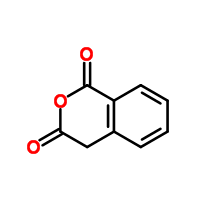This answer is years later than the original question, but I add it for anyone who come across it now or in the future...
All acid anhydride and acid chlorides are thermodynamically unstable in water. They will eventually hydrolyze, but that time could be seconds, minutes, hours, days, or years. Moreover, in the absence of a catalyst, the rate of hydrolysis (kinetics) of any acid anhydride or any acid chloride (carboxylic, phosphoric, sulfonic, etc.) is strongly temperature dependent (hotter = faster, colder = slower, as you would expect).
For example, the classic hydrolysis of acetic anhydride is quite slow until temperatures exceed 55—60 °C. Similarly, sulfonyl chloride hydrolysis is very slow until temperatures exceed about 70 °C. This is in part driven by solubility - the substrate needs to be in the same phase as the water for fast rates. Phosphoric anhydrides such as ATP or ADP can be extremely stable in water at physiological temperatures (37 °C). The presence of an protic acid, or particularly a nucleophilic catalyst (hydroxide, amines, thiols), can change the kinetics dramatically. Thus, you have to pay attention to the temperature, the phasing/solubility, and the identities/properties of the other components in your reaction mixture.



